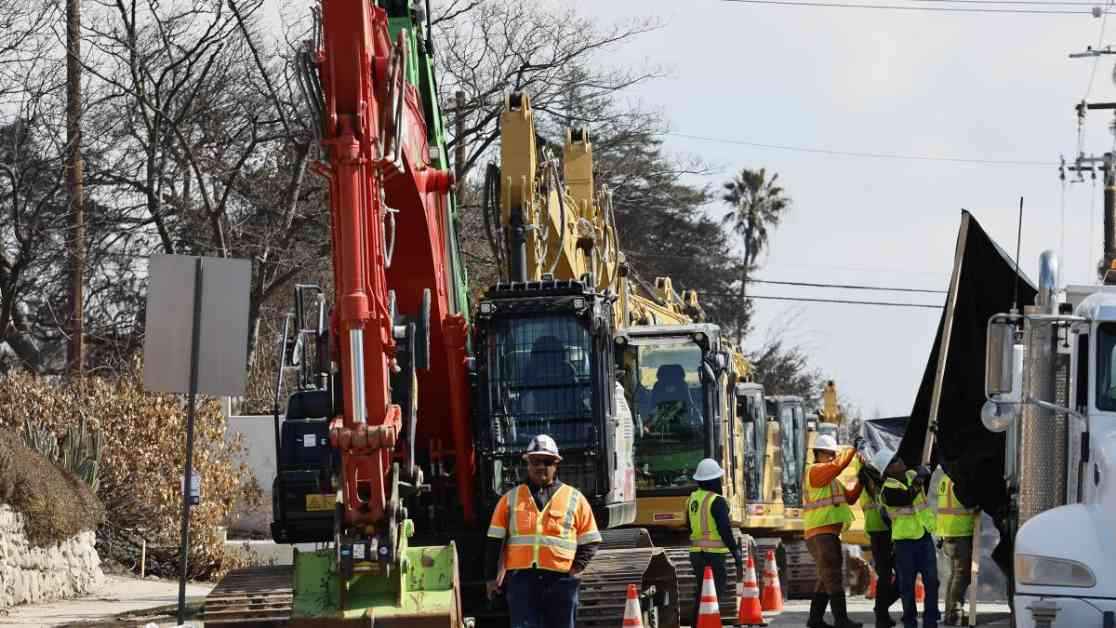The U.S. Army Corps of Engineers made a surprising announcement on Wednesday regarding the cleanup of properties affected by the Eaton and Palisades fires in Los Angeles. In a departure from the longstanding practice of conducting soil testing after wildfires to ensure no lingering contamination remains, the Army Corps stated that they will not order soil testing at properties cleaned by private federal contractors. This decision has raised concerns among federal and state agencies, as well as local officials.
Army Corps’ Decision Sparks Concerns
The traditional process of collecting and analyzing soil samples, known as confirmation sampling, has been a standard practice in California for the last twenty years. It involves verifying that the soil at properties no longer contains toxic chemicals above the state’s cleanup standards after removing ash, rubble, and up to six inches of topsoil. However, the Army Corps now believes that excavating six inches of topsoil is sufficient to eliminate hazardous pollution from fire-damaged properties.
During a news conference in downtown Los Angeles, Army Corps Col. Eric Swenson defended the decision by stating that soil sampling was not part of the authorized disaster response. He explained that the Army Corps follows specific guidelines and instructions provided to them, limiting their scope of work under the current disaster situation. This unexpected shift in protocol has left many officials surprised and concerned about the potential implications on public health and safety.
Los Angeles County officials, including Kathryn Barger, chair of the L.A. County Board of Supervisors, expressed their reservations about the Army Corps’ decision. Barger emphasized the need to address this issue promptly and find solutions to ensure that properties are free from contamination. The decision is likely to place the responsibility on homeowners, businesses, and school districts to conduct testing and remove any remaining contaminated soil to comply with California’s cleanup standards.
Expert Insights and Public Health Concerns
Wildfire experts and environmental advocates have criticized the Army Corps’ decision, raising questions about the potential risks of leaving properties contaminated with toxic chemicals. Jane Williams, the executive director of California Communities Against Toxics, expressed concerns that without confirmatory sampling, hazardous materials may persist in the soil, posing a threat to residents’ health. The lack of property-by-property testing has sparked legitimate concerns among public health officials and experts in the field.
Jill Johnston, an associate professor at USC with experience in overseeing soil testing in contaminated areas, highlighted the importance of protecting vulnerable populations from exposure to heavy metals present in the soil. She emphasized that these hazardous materials can pose long-term health risks, particularly to children, the elderly, and individuals with chronic diseases. Barbara Ferrer, director of the L.A. County Department of Public Health, acknowledged the need for further research and collaboration with federal, state, and academic institutions to better understand the toxic materials present in the ash.
The decision by the Army Corps has significant implications for the ongoing wildfire cleanup efforts in Los Angeles County. As federal cleanup crews begin clearing debris from homes in affected areas, concerns about the adequacy of the current cleanup process and potential health risks linger. The lack of soil testing and removal of contaminated soil may leave residents exposed to dangerous heavy metals, prompting calls for a reevaluation of the cleanup strategy.
The Army Corps’ decision to forego soil testing at fire-damaged properties raises critical questions about public health and environmental safety. As officials and experts continue to assess the situation, the need for thorough testing and cleanup measures remains paramount to safeguarding the well-being of communities affected by wildfires. The implications of this decision will likely influence future disaster response protocols and environmental policies to ensure comprehensive and effective cleanup efforts.


